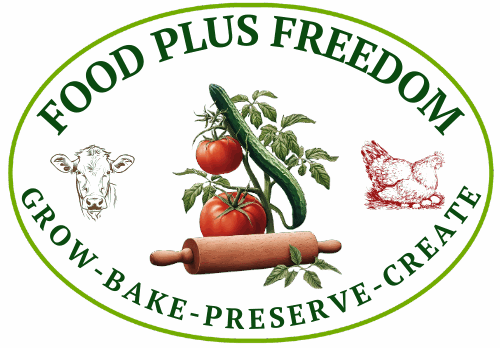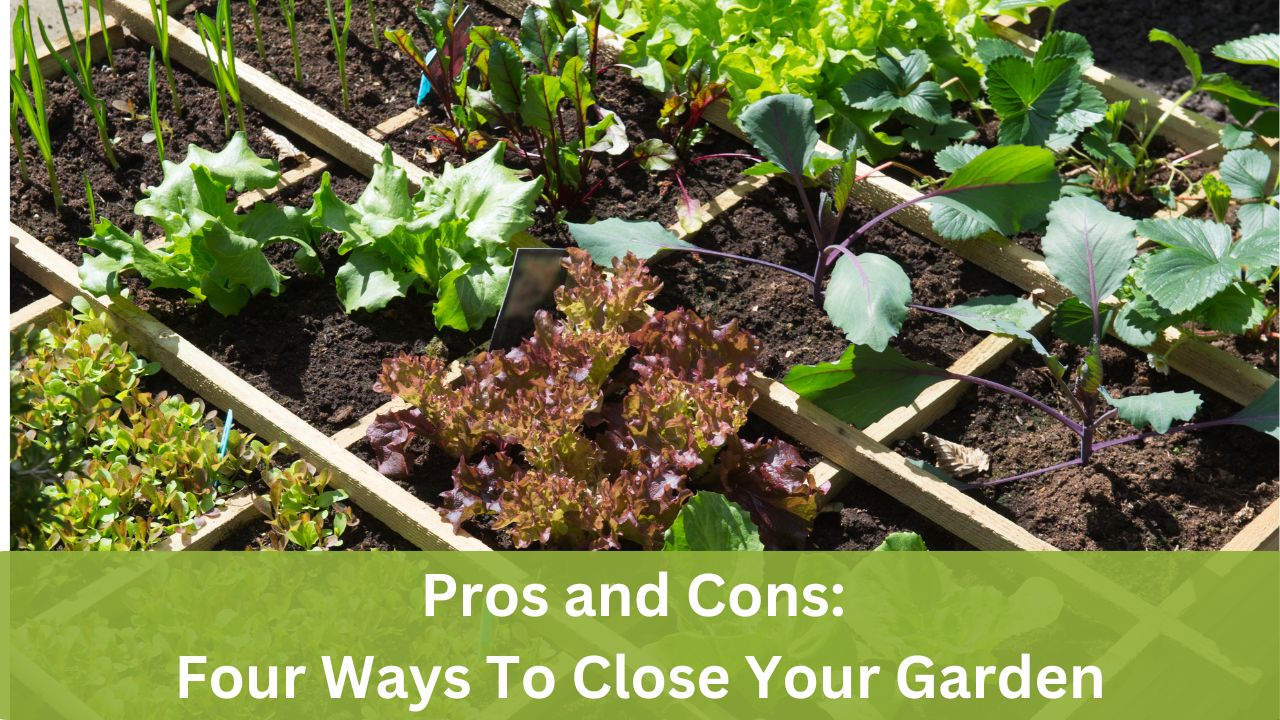Do you really need to close your garden in between plantings and seasons?
Some say yes, some say no, while others shrug without an opinion either way. I look at my garden beds in a different manner then just a place to grow or not grow food.
I look at my growing space in my garden as areas I am growing food for us, growing food for the soil, or both. Remember, soil is alive just like you. It needs air, water, sunshine, food, etc.
When you’re done gardening in a bed, how do you leave it? Do you pull everything out of the growing area, leaving the soil exposed and barren? Do you leave the roots after cutting the tops of the plants? Do you leave the tops of the plants and take out the roots? Do you add other organic material or cover the area with a weed barrier? By leaving roots in the soil to decompose, you add nutrition to your soil. By picking the plants and leaving the tops or leaves to decompose, you add amendments to the soil as well.
There are four methods we’ve done in our garden. You can garden and walk away, cover your garden with plastic, grow a cover crop, cover with natural materials, or any combination of the previous methods.
Garden and Walk Away Method
If you finish growing in your garden and walk away, you’re not doing anything to aid in the soil health. Or are you?
How you leave the garden area will determine how the soil behaves when you’re not growing in it. If you do nothing, weeds and I mean many weeds will reappear by the time you grow again.
If you don’t mind pulling weeds, these weeds could be beneficial to your garden. The roots will aid in soil growth and keep your soil from washing or eroding away.
When you return to gardening, you can just pull the weeds and plant.
Garden and Walk Away Pros and Cons
Pros:
- When you’re done for the season, you are done.
- You don’t need to think about or do anything to the growing area until you’re ready to grow again.
Cons:
- You could get invasive weeds, you’ll have to deal with later.
- You don’t have control over what is in the growing area to help the soil regenerate for the following year.
- If you have lots of rain before weeds come, you could loose soil.
Cover Your Garden With Plastic or Cloth
When you finish gardening, do you cover the beds with dark plastic or cloth covering?
The covering will keep weeds from growing, for there isn’t any light. The soil will continue to be alive underneath as microorganisms do there thing in the off season.
I have covered sections of my garden. Using black plastic and fabric over beds and grow areas kept weeds from growing. Since we didn’t add any new material to the beds to break down, the soil didn’t grow. The areas that were covered not in raised beds were dry and some erosion had occurred.
We no longer cover with plastic or black cloth for our compost or in the garden because we are getting all plastic and unnatural stuff out of our garden.
Cover your garden with plastic or cloth pros and cons.
Pros:
- Weeds didn’t grow under either covering.
- Beneficial bugs and worms thrived beneath the covering.
Cons:
- Without adding extra material to the garden, the soil didn’t grow.
- Some areas lacked moisture.
- Some erosion had taken place.
Planting a Cover Crop
You can plant cover crops or green manure into areas of your garden to help feed the soil while growing, keep the soil from eroding, and feed the soil when the crop dies off. You plant a cover crop or ground cover that is not invasive and dies off within a season or easy to pull and drop on top of the soil.
In the commercial or larger than gardener world, farmers till under a cover crop to add nutrients to the soil. Since we believe in no-til gardening, we pick plants that are easy to pull or die off naturally at the end of the season. We place any crop we remove from the growing area on top of the soil, so that it can decompose into the soil.
Many of these crops, if they mature, can also give you some food as well.
Common cover crops are barley ,wheat, oats, peas, and clover. If you get a winter, peas need to be covered with a cloth or low hoops to keep from freezing and give you food. If you don’t care about the food, then just plant and let them die when they do.
Planting a cover crop pros and cons.
Pros:
- You are feeding your soil in the off season.
- You can feed yourself from teh cover crop if it matures.
- It can keep down the weeds.
- Keeps the soil moist
- Prevents run off
Cons:
- You need to prepare the soil for growing.
- You need extra seeds to grow your cover crop.
- Getting food from the cover crop can be time consuming.
Cover With Natural Materials
When you cover your growing area with natural material, anything that composts or compost, you’re adding nutrients to your soil.
Covering with natural materials can also keep down weeds, or make them easy to pull when you grow again. Covering adds to compost to the soil as it decomposing.
Common cover with natural materials include leaves, old hay, straw, and wood chips.
Covering with natural material pros and cons.
Pros:
- It keeps down weeds.
- Helps add compost to the growing areas
- You’re creating more soil.
- Keeps the area most.
- Helps cut down on erosion
Cons:
- You need access to the material you’re putting onto your garden beds.
- If you have to buy it, it can be expensive.
- You could get seeds from the hay or straw which can grow. The growth from these seeds is easy to pull in the spring.
What we do to officially close our growing areas.
So what do we do at the end of the season? We do a combination of all the above except for using plastic or cloth.
It depends on many factors. Such as time, weather, what’s going on, and life.
Sometimes we leave grow areas without doing anything until later in the winter or spring. This is normally the case with our blackberry area. It is the last area of the garden we close. Many times we run out of time before it snows, or it’s hunting season.
We leave the area as it is at the end of the season. As the weather permits, we cut off dead canes, pull weeds, tie up new canes, etc. We also add a covering of hay and straw cleanings from the animals.
Sometimes we use the cover with a natural material method. Our strawberry beds are closed each winter by putting a thin layer of straw over them. This cuts down on weeds and makes sure the strawberries have some insulation. Make sure you uncover your strawberry plants come spring for the best growth and berries.
Some areas get covered with natural material and we plant a cover crop. We plant our seeds on top of the soil, then cover the area with straw. This allows the seeds to germinate and become strong before they pop up for the birds to see. We lose fewer plants to birds who are in search of food. The straw also allows for less erosion while the seeds are taking hold.
This year, we are planning on planting oats, wheat, and peas. The peas will be in a grow bed, we can add a hoop house over. We will plant the oats and wheats in any bed that does not have something growing for the winter.
Lastly, I pull the last stalks of rhubarb from our rhubarb bed and cut off the tops. We place these tops back onto the plants to decompose. If I don’t have enough rhubarb tops to cover about an inch, I use leaves from the ground. Yes, the leaves can blow off, so I water them down to stay until they start decomposing.
It may seem like a lot of work to close your garden. It really isn’t, because you can do one grow area at a time. Plus, it doesn’t have to be done as soon as you’re done harvesting.
When you close your garden in the fall. It makes growing in the new season so much easier. Your beds are ready to go. The soil will feel amazing. Plus, you get a little dreaming or thinking time for what you do or don’t want to plant the next season.
Choose one area of your garden and decide how you want to close it. If you live in an area where winter is your growing season, then you have even more time to figure out how you can close your garden beds.

